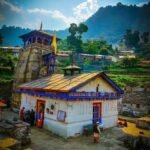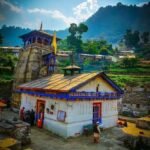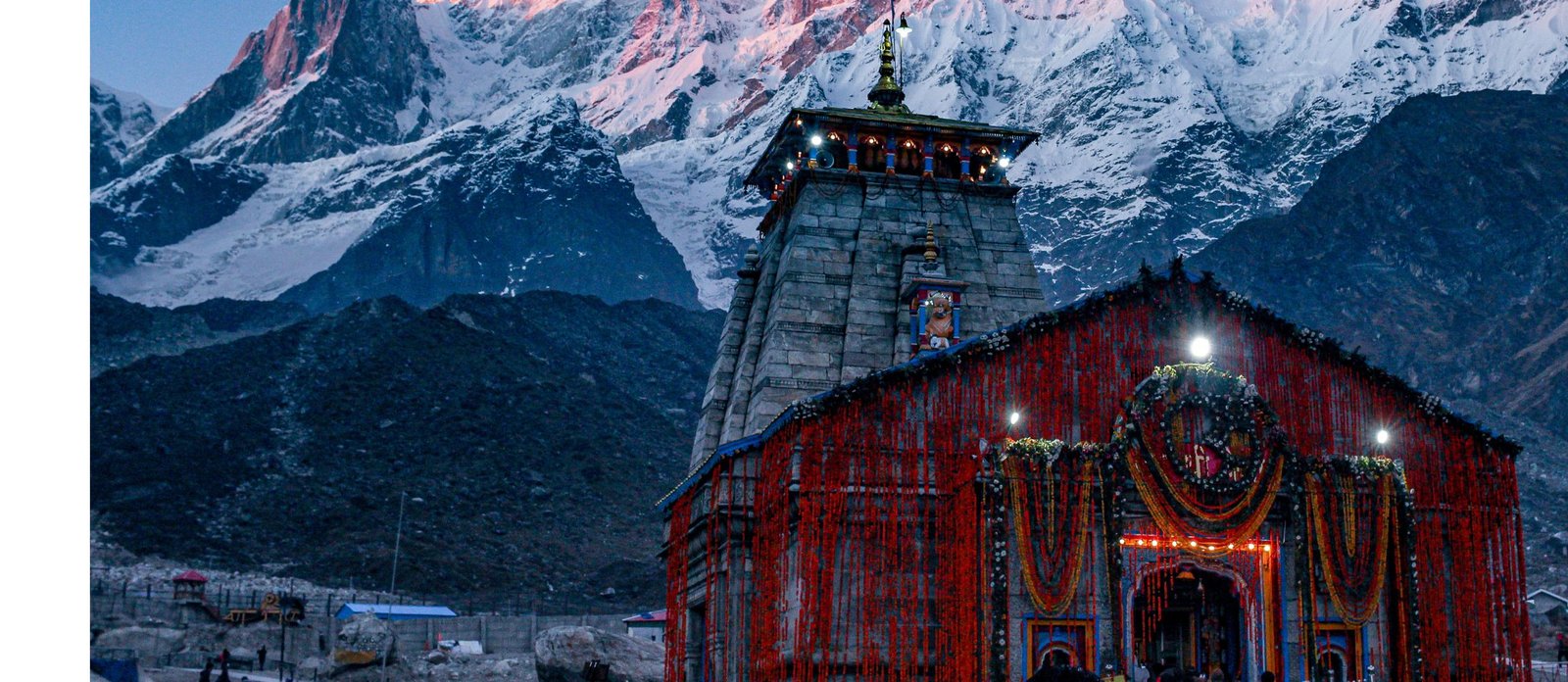
Chardham Yatra Travel Tips – A Complete Guide for Pilgrims 2025-26
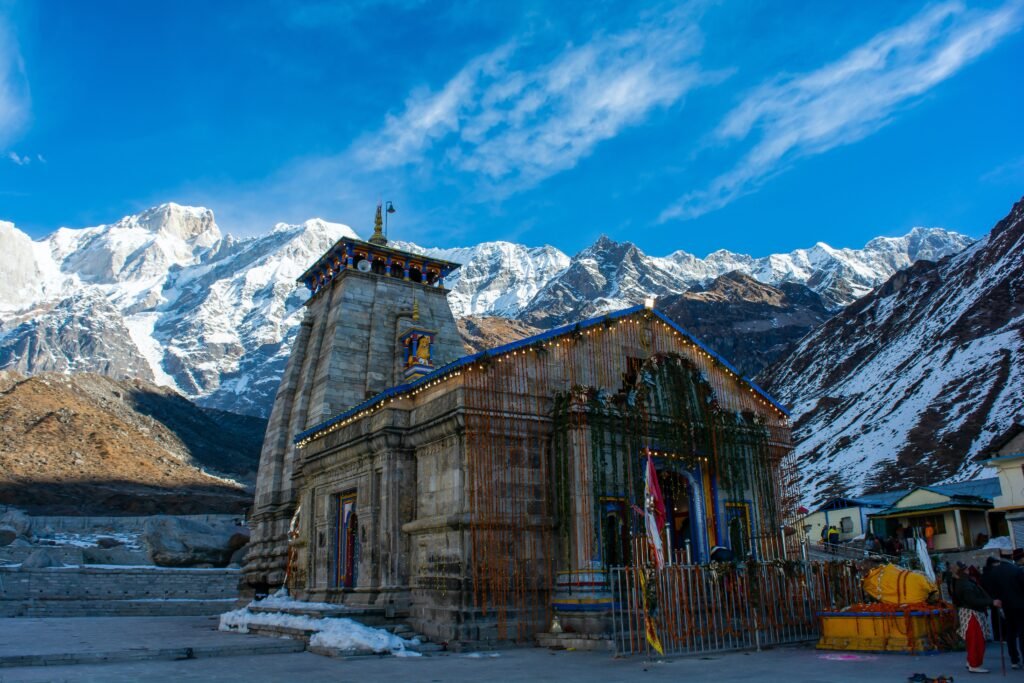
The Char Dham Yatra—covering the four sacred shrines of Kedarnath, Badrinath, Gangotri, and Yamunotri—is not just a journey through the majestic Himalayas, it’s a once-in-a-lifetime spiritual experience. Pilgrims from across India and abroad undertake this yatra with deep faith, seeking blessings and inner peace. But while the journey is profoundly spiritual, it is also physically challenging and logistically complex, which is why having the right Chardham Yatra travel tips can make all the difference between a smooth pilgrimage and a stressful one.
Think about it: the temples are located at high altitudes, where weather conditions can change suddenly, medical facilities are limited, and the terrain is often steep and slippery. Add to this the large crowds during peak season, limited accommodation options, and the requirement for mandatory registration and health check-ups—and you’ll see why preparation is essential.
That’s where this guide comes in. We’ve put together practical, experience-based tips to help you prepare for everything—choosing the right travel time, staying fit, packing the essentials, ensuring safety, arranging accommodation, and even keeping the right mindset to fully embrace the spiritual essence of the journey.
By the end of this guide, you won’t just know what to pack or when to go—you’ll have a complete roadmap for a hassle-free Chardham Yatra. The goal is simple: so that you spend less time worrying about logistics and more time soaking in the serenity of the Himalayas and the blessings of the divine shrines.
Tip 1: Start Your Chardham Yatra Travel Planning Early
The Chardham Yatra is not like an ordinary holiday where you can book tickets and pack your bags at the last minute. This is a sacred journey through the high Himalayas, involving long road trips, treks, unpredictable weather, and limited infrastructure. The more prepared you are, the smoother and more fulfilling your yatra will be.
Why Early Planning Matters
- Seasonal Rush: The yatra season is short — usually from April/May to October/November. During this window, lakhs of pilgrims from all over India visit the four shrines, so trains, hotels, and even helicopter tickets get sold out months in advance.
- Better Deals: Early bookings often mean better travel and stay options at reasonable prices, while last-minute planning can leave you with fewer choices and inflated costs.
- Health Preparation: If you’re not used to high altitudes or long treks, early planning gives you time to improve your fitness. A few weeks of walking or light cardio beforehand makes a huge difference on steep climbs.
- Spiritual Prep: Many devotees also like to mentally and spiritually prepare for the journey — fasting, reading scriptures, or practicing meditation — which feels more meaningful when you have time on your side.
Things to Plan in Advance
- Registration & Permits – Every pilgrim must register officially for the yatra. Doing this early avoids last-minute queues.
- Travel Route – Decide where you’ll start: Haridwar, Rishikesh, or Dehradun. Based on this, you can plan your onward journey.
- Accommodation – Hotels and guesthouses near key halts like Guptkashi, Uttarkashi, and Joshimath fill up quickly. Early booking secures decent options.
- Transport – Whether you want a private cab, group bus, or helicopter service, reserving early ensures availability.
- Packing List – Mountains demand proper gear: warm clothes, trekking shoes, medicines, and rain protection. Planning early helps you arrange all essentials.
Think of early planning as building a safety net. It saves you from last-minute stress, helps you travel more comfortably, and gives you the peace of mind to focus on the spiritual essence of the yatra rather than worrying about logistics.
Tip 2: Choose the Best Time to Travel for Chardham Yatra
One of the important questions every pilgrim asks before planning is: “When is the best time to go for the Chardham Yatra?” The answer is simple, yet very important—because the success of your trip depends a lot on timing.
The Char Dham temples open each year in April/May (around Akshaya Tritiya) and close by October/November (around Diwali). Within this window, the most comfortable and safe months are May–June (summer season) and September–October (post-monsoon season).
- Summer (May–June): The weather is generally pleasant, with clear skies and manageable daytime temperatures. This is the most popular time for the yatra, so you can expect larger crowds. But the roads are relatively safer, and most facilities (accommodation, shops, ponies/palkis) are fully operational.
- Post-Monsoon (September–October): The rains settle by early September, leaving behind fresh greenery and crystal-clear mountain views. The crowd is thinner compared to May–June, making the experience calmer. However, it gets colder, especially at night, so carrying warm clothing is a must.
- Avoid Monsoon (July–August): Even though the yatra is technically open, this is the least recommended time to travel. Heavy rainfall in the Himalayas often leads to landslides, roadblocks, and disruptions in connectivity. Safety risks are higher, and temple access may be delayed.
Another thing to remember is that weather in the mountains is highly unpredictable. Even in May or September, a sunny morning can turn into a chilly, rainy evening. That’s why it’s wise to keep a buffer day or two in your itinerary to account for sudden weather-related delays.
So, if you’re wondering when to plan your Char Dham trip, the best choice is May–June or September–October. These seasons balance safety, accessibility, and comfort—allowing you to focus more on your spiritual journey rather than battling the elements.
Tip 3: Prepare Your Health & Fitness Before the Yatra
The Char Dham shrines are located at altitudes ranging from 3,000 to 3,600 meters, which means your body will be exposed to thin air, steep climbs, and unpredictable weather. Even if you’re generally healthy, preparing your body in advance is one of the smartest things you can do before setting out.
- Start light exercises: Simple activities like brisk walking, jogging, or stair climbing can improve stamina. Since you’ll often walk on hilly paths, building endurance helps you enjoy the journey without constant fatigue.
- Practice breathing exercises: At higher altitudes, oxygen levels drop. Yoga techniques like pranayama and deep-breathing exercises strengthen your lungs and help your body adjust better.
- Get a medical check-up: The Uttarakhand government makes a medical certificate mandatory for all pilgrims. Even beyond the requirement, it’s wise to check for conditions like blood pressure, heart issues, or asthma. Carry prescribed medicines and a basic medical kit.
- Acclimatization is key: Don’t rush. Allow your body to rest at intervals, especially when moving from one shrine to another. Spending some time at mid-level altitudes before heading to higher points reduces the risk of altitude sickness.
Taking these steps might feel like an extra task now, but they will save you from health problems later. After all, the purpose of your journey is spiritual peace, not physical struggle. And if there’s one Chardham Yatra travel tip that seasoned pilgrims never skip—it’s preparing their health in advance.
Tip 4: Complete Your Registration & Keep Documents Handy
Unlike a casual holiday trip, the Chardham Yatra requires mandatory registration for every pilgrim. This system is in place for your safety and tracking, especially since you’ll be traveling through remote, high-altitude areas. The process is simple, but skipping it can cause unnecessary delays during your journey.
- Online Registration: You can register through the official Uttarakhand Char Dham portal or app. The process is quick and gives you a QR-coded Yatra pass, which you’ll need to show at checkpoints.
- Offline Registration: For those who prefer in-person verification, registration counters are available at Haridwar, Rishikesh, and along the Yatra route.
- Documents Required: Carry a valid government-issued ID (Aadhaar card, voter ID, or passport) along with a recent passport-sized photo. A medical fitness certificate issued by an authorized doctor is also compulsory.
- Keep Digital Copies: Besides physical documents, save scans on your phone or email. Connectivity can be patchy in the mountains, so having multiple backups ensures you’re never stuck.
This step is not just a formality—it’s an assurance that your travel is officially recognized and monitored for emergencies. Among all Chardham Yatra travel tips, this one stands out as a non-negotiable. Think of it as your official ticket to a smoother, safer pilgrimage.
Tip 5: Pack Smart – Essentials You Must Carry

One of the most common worries before the pilgrimage is: “What should I pack for the Char Dham Yatra?” Packing right is crucial because the journey takes you through changing altitudes, unpredictable weather, and long walking stretches. Overpacking can weigh you down, but forgetting essentials can make the trip unnecessarily stressful. That’s why following the right Char Dham Yatra packing tips will help you strike the perfect balance.
Clothing for All Weather Conditions
- Layered Clothing: Carry light cotton clothes for the day, but also pack sweaters, jackets, and thermal wear for evenings and nights, which can get very cold.
- Rain Gear: A poncho or raincoat and quick-dry clothes are essential, especially if you’re traveling close to the monsoon season.
- Woolens & Accessories: Woolen caps, gloves, and socks will protect you from sudden temperature drops. A muffler or scarf is also useful.
Why: The Himalayas are known for their fast-changing weather. Being prepared for both warm afternoons and chilly nights will keep you comfortable throughout.
Right Footwear for Trekking & Walking
- Trekking Shoes: Invest in a good pair of sturdy, waterproof trekking shoes with proper grip.
- Slippers/Floaters: Carry an extra pair for comfort in the camps, hotels, or temple premises.
Why: The yatra involves uneven terrain, slippery paths, and sometimes hours of walking. Good shoes prevent injuries and fatigue.
Medical Kit & Personal Care Items
- Medicines: Carry your prescribed medicines, plus common ones for fever, cold, headache, acidity, and stomach issues.
- First Aid: Band-aids, antiseptic cream, pain relief spray, and cotton rolls.
- Altitude Sickness Relief: ORS packets, glucose, and motion sickness tablets.
Why: Medical facilities are limited on the route, and even minor issues can slow you down if you’re unprepared.
Travel Gadgets & Utilities
- Torch/Headlamp: Useful during early morning temple visits or power cuts.
- Power Bank: Electricity may not always be reliable in remote places.
- Reusable Water Bottle & Thermos: Staying hydrated is critical; a thermos helps keep water warm in cold weather.
Why: Small gadgets make a big difference in remote Himalayan conditions where basic amenities may not always be available.
Documents & Money
- ID Proof & Yatra Registration Slip (both hard and soft copies).
- Cash in Small Denominations: ATMs are rare and often non-functional in the mountains.
- Travel Insurance (if available): Extra security in case of unexpected emergencies.
Temple & Pilgrimage Essentials
- Offerings (Pooja Samagri): Can be purchased locally, but carrying small items in advance saves last-minute hassle.
- Reusable Cloth Bag: Handy for carrying offerings or personal items while visiting temples.
Smart Packing Tips
- Use a rucksack/backpack instead of heavy suitcases—it’s easier to carry during transfers.
- Keep clothes in waterproof pouches or zip bags.
- Pack light but complete—take what you need, not what you might need.
Tip 6: Arrange Comfortable Travel & Accommodation in Advance
One of the most overlooked aspects of the Chardham Yatra is the travel and stay arrangements. The journey takes you through remote Himalayan towns where availability is limited, especially during the peak yatra season (May–June and September–October). Planning these essentials in advance will save you stress, money, and unnecessary last-minute hassles.
Plan Your Travel Wisely
- By Road: Most yatris start from Haridwar, Rishikesh, or Dehradun. Shared taxis, buses, and private vehicles are the main options. If you prefer convenience, book a private cab or a guided tour package.
- By Helicopter: For elderly pilgrims or those short on time, helicopter services are available to Kedarnath, Badrinath, and Yamunotri. These must be booked well in advance due to limited seats.
- Combination Option: Some travelers book a mix — road journey plus helicopter ride for Kedarnath — to balance cost and comfort.
Choosing the right travel mode depends on your health, time, and budget. Advance booking not only ensures a seat but also helps avoid inflated prices closer to the dates. For a hassle-free transport facility check out our Taxi service for Chardham Yatra, Do Dham Yatra or Ek Dham Yatra.
Secure Accommodation in Advance
- Limited Supply, High Demand: Towns like Guptkashi, Joshimath, and Uttarkashi often get fully booked during peak yatra. Waiting till the last minute might leave you with poorly maintained rooms or long distances from the main route.
- Types of Stay: Options range from budget lodges and dharamshalas (simple pilgrim stays) to mid-range hotels and government guesthouses. In recent years, homestays have also become popular for those seeking a more local experience.
- For Comfort Seekers: If you’re traveling with family or elderly members, look for hotels with basic amenities like hot water, comfortable bedding, and attached bathrooms.
Helpful Booking Tips
- Check reviews online before booking — photos can be misleading.
- Prefer accommodations near the main route or temple base camps to save time.
- During monsoon, confirm whether your hotel is in a safe location (away from landslide-prone zones).
- Carry a few cash notes, as card payments and UPI may not always work in remote areas.
Many yatris assume they’ll “manage on the spot,” but Chardham routes are not like city trips. Properly arranged travel and stay ensure you focus on devotion and the journey itself, rather than running around for logistics.
Tip 7: Prepare for Weather & Altitude Challenges
The Chardham Yatra in Uttarakhand takes you through some of the most breathtaking yet unpredictable Himalayan landscapes. While the divinity of the journey inspires many, the weather and altitude can catch even seasoned travelers off guard. Preparing for these challenges is key to ensuring that your pilgrimage remains safe, comfortable, and spiritually fulfilling.
Understand the Weather Patterns
- Unpredictable Climate: The Himalayas are known for sudden weather changes. You may start your morning under a clear sky and face heavy rain or chilly winds by afternoon.
- Cold Even in Summer: Even during peak yatra season (May–June), temperatures in places like Kedarnath or Yamunotri can drop drastically at night. Warm clothing is essential.
- Monsoon Risks: July and August bring heavy rainfall, which often causes landslides, roadblocks, and slippery trekking paths. This is why many experienced yatris avoid peak monsoon.
- October Chill: By September–October, the weather becomes crisp and cold, but the skies are clearer — a favorite for those who can handle lower temperatures.
Altitude Awareness
The Chardham temples are located at elevations between 3,000–3,600 meters (10,000–12,000 ft). At such heights, oxygen levels are thinner, and altitude sickness can occur.
- Common Symptoms: Headache, nausea, shortness of breath, dizziness, or unusual fatigue.
- Preventive Measures:
- Ascend gradually and avoid rushing treks.
- Stay hydrated but don’t overdrink water in one go.
- Carry prescribed medicines like Diamox after consulting your doctor.
- Avoid alcohol or smoking — they worsen altitude symptoms.
- Give your body time to acclimatize at halts like Guptkashi or Joshimath before moving to higher shrines.
What to Pack for Weather & Altitude Safety
- Layered warm clothing (thermal wear, jackets, sweaters).
- A good-quality raincoat or poncho, especially in monsoon months.
- Sturdy trekking shoes with good grip for slippery terrains.
- Gloves, woolen caps, and socks to fight cold winds.
- A basic medical kit with altitude and motion sickness medicines.
Tip 8: Respect Local Culture, Traditions & Environment
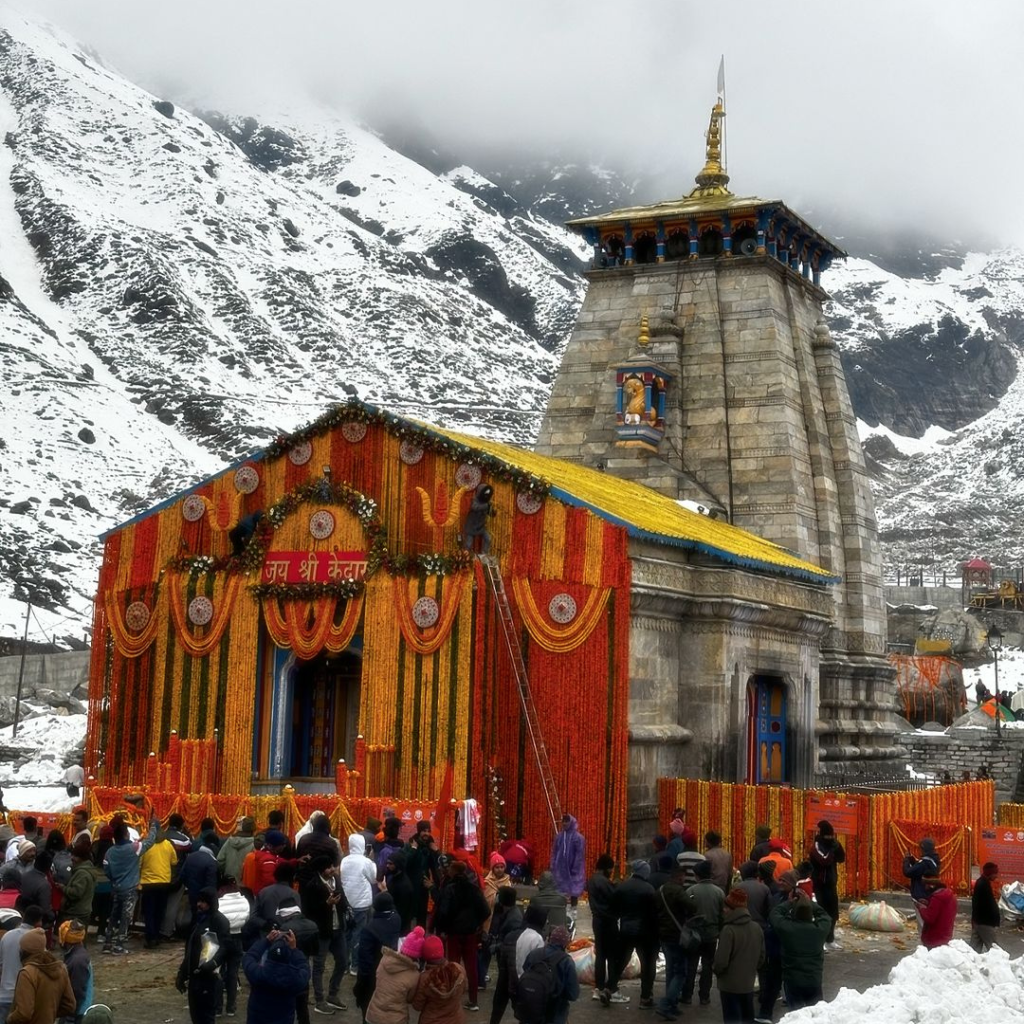
The Chardham Yatra is not just a journey through the Himalayas — it’s a sacred pilgrimage deeply rooted in India’s cultural and spiritual heritage. Along the route, you’ll pass through villages, temples, and natural landscapes that hold immense significance for locals and devotees alike. Respecting these traditions and the environment is just as important as reaching the shrines themselves.
Respect Local Customs and Traditions
- Dress Modestly: The temples and villages you’ll visit are considered holy. Wearing simple, modest clothing shows respect for the sanctity of the place.
- Temple Etiquette: Always remove your shoes before entering temple premises. Avoid loud conversations, and respect queues during darshan.
- Photography Rules: In many shrines, photography is either restricted or prohibited. Always ask before clicking pictures, especially of locals or religious rituals.
- Support Local Communities: Many villagers depend on yatris for their livelihood. Buying local food, handicrafts, or using local guides helps sustain their economy.
Protect the Fragile Himalayan Environment
- Carry Your Waste Back: Plastic bottles, wrappers, and disposables are a huge problem in the mountains. Always carry a small waste bag with you and dispose of it at proper collection points.
- Say No to Plastic: Use reusable bottles and cloth bags wherever possible.
- Respect Nature: Do not pluck flowers near temples, carve your name on rocks, or disturb wildlife. The Himalayas are sacred and fragile — they deserve to be preserved.
- Stay on Designated Paths: Trekking off-route not only endangers you but also damages the delicate ecosystem.
Spiritual Significance of Respect
Showing respect to the culture and nature is not just about being polite — it’s an integral part of the pilgrimage itself. In Hindu tradition, the Himalayas are seen as the abode of gods. By maintaining dignity in behavior and responsibility in actions, you align your journey with the true spiritual essence of the Char Dham Yatra.
Tip 9: Safety First – Travel Insurance, Guides & Emergency Readiness
Travel Insurance for Peace of Mind
Many yatris overlook travel insurance, but in the Himalayas, it’s a small investment that can make a big difference. It can cover medical emergencies, trip cancellations, lost baggage, and even helicopter evacuation in extreme cases. This is especially important for elderly pilgrims or anyone with pre-existing conditions. If you’re choosing a policy, make sure it specifically covers high-altitude travel and trekking-related risks, since not all standard insurance plans do. Being insured means you don’t have to worry about “what ifs” and can instead give your full attention to the journey itself.
Hire Experienced Local Guides When Needed
Local guides aren’t just for navigation — they are your safety net on tricky routes like Kedarnath or Yamunotri treks. They know safe paths, resting spots, and how to respond in case of minor mishaps. At the same time, they enrich your pilgrimage by sharing cultural stories and local traditions you might otherwise miss. Having a guide by your side ensures that you’re not just traveling safely but also connecting more deeply with the place and its history.
Emergency Readiness in the Himalayas
The high altitude and remote terrain mean that medical and rescue facilities are limited. A simple health checkup before your journey can rule out issues like high blood pressure, heart problems, or respiratory difficulties that might worsen at altitude. Always carry your personal medicines, a first aid kit, and ORS packets to stay energized on long routes. Mobile connectivity is patchy, so inform your family about your travel plan in advance and keep important helpline numbers saved on your phone. Taking these small steps ensures you can handle unexpected situations calmly and continue your yatra without major setbacks.
Tip 10: Budget Wisely & Keep Extra Cash Handy
Managing your finances is one of the most important parts of ensuring a stress-free Chardham Yatra. While many expenses like travel, accommodation, and food can be pre-booked, there are always additional costs that come up during the journey—such as local transport, prasad, pony or palanquin rides, donations at temples, or small purchases in hill markets. ATMs are limited in the higher Himalayan regions and digital payments may not always work due to poor connectivity, so carrying sufficient cash is essential.
A smart approach is to create a realistic budget before your trip, keeping a buffer for emergencies or unplanned expenses. Divide your money into small portions and keep them in different safe places, like a waist pouch and your main bag, so you don’t risk losing everything at once. Budgeting wisely and carrying extra cash ensures you remain prepared for any situation without financial stress, making your spiritual journey smoother and more fulfilling.
The Chardham Yatra is not just a pilgrimage—it’s a life-changing journey that combines spirituality, nature, and adventure in the Himalayas. Proper preparation ensures you can focus on the divine experience without unnecessary stress. By following these Chardham Yatra travel tips—whether it’s planning early, packing wisely, arranging comfortable travel, staying mindful of your health, or keeping safety, weather, and budgeting in check—you can make your journey smooth and memorable. With the right mindset and readiness, your Chardham Yatra becomes more than just a trip—it transforms into a soulful experience that stays with you forever.


